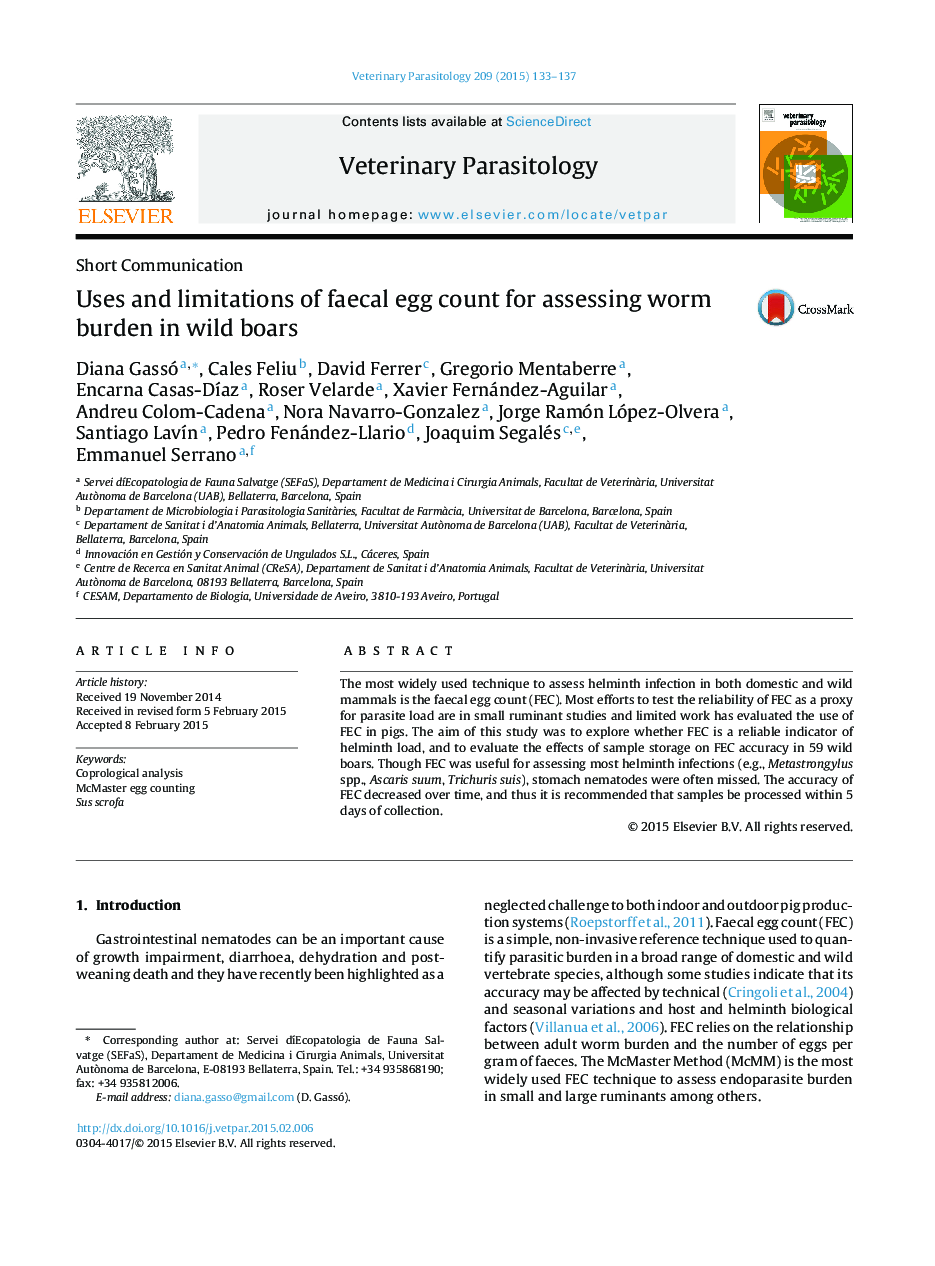| کد مقاله | کد نشریه | سال انتشار | مقاله انگلیسی | نسخه تمام متن |
|---|---|---|---|---|
| 5802570 | 1555673 | 2015 | 5 صفحه PDF | دانلود رایگان |
- Few studies assessed the utility of FEC as a proxy for adult worms in pig or wild boars.
- FEC was useful for assessing Metastrongylus spp., Ascaris suum, Trichuris suis infestations, it tended to overlook stomach nematodes.
- The accuracy of FEC decreased over time, and thus it is recommended that samples be processed within 5 days of sampling.
The most widely used technique to assess helminth infection in both domestic and wild mammals is the faecal egg count (FEC). Most efforts to test the reliability of FEC as a proxy for parasite load are in small ruminant studies and limited work has evaluated the use of FEC in pigs. The aim of this study was to explore whether FEC is a reliable indicator of helminth load, and to evaluate the effects of sample storage on FEC accuracy in 59 wild boars. Though FEC was useful for assessing most helminth infections (e.g., Metastrongylus spp., Ascaris suum, Trichuris suis), stomach nematodes were often missed. The accuracy of FEC decreased over time, and thus it is recommended that samples be processed within 5 days of collection.
Journal: Veterinary Parasitology - Volume 209, Issues 1â2, 15 April 2015, Pages 133-137
